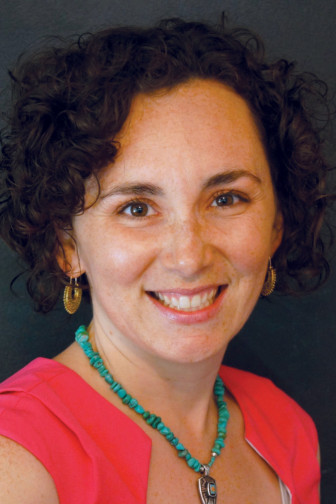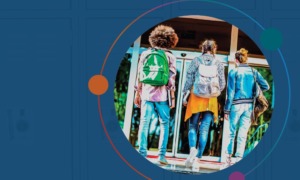
Stephanie Krauss
So far on our journey through Jobs for the Future’s student-centered learning framework, you have met my son — the 6-year-old who spends his free time learning about ball players and building stadiums — and Taliq — an education entrepreneur and high school student in Rhode Island. We have seen how the student-centered learning principles should operate and experienced the life-altering power of young people owning their learning.
Both stories demonstrate our next principle, anytime, anywhere learning. This is the idea that learning always counts, no matter where or how or with whom it happens. It is sometimes called “expanded learning.” We find it in many community-school partnerships, collective impact initiatives and several state education reforms (such as in Rhode Island). A few years ago, the Ford Foundation supported some of these efforts, including from the Annenberg Institute, which used funds to develop quality indicators of what expanded learning should look like in classrooms, school districts and communities.
Anytime, anywhere learning is a major part of my story and my brothers’. My sons love hearing stories about how I grew up. They know Uncle Jamie wrote a book, Uncle Marc makes radio programs, and Uncle David went to Harvard. They know Uncle Nick is the one who taught in India and that he just moved home to become a lawyer. But they don’t know the more complex pieces of our family story.
My Family’s Learning Stories
Jamie left high school his junior year, convinced he wasn’t smart. He tried music, then comedy, slam poetry and then comedy again. He lived in his car and on friends’ couches. It was while working at a bookstore that he finally developed a love of learning. He starting incorporating what he was reading into his performances. The crowd taught him what worked and what didn’t. With time and practice, he became a great performer. Jamie is largely self-taught, learning on the job and being tested at comedy venues, bars and coffee shops.
My brother Nick made it through high school, though at times we thought he might not. Insatiably curious and incessantly argumentative, he was more challenging than compliant. A couple of teachers who coached wrestling saw his persistence as promise. Wrestling gave Nick the skills and habits he needed to harness his smarts and pursue his interests. No one was surprised when he went on to become a high school teacher (and a really good one, at that) and a wrestling coach.
Marc did really well in high school, but dropped out of college. An internship opened up his world to new paths. He got to write for major news outlets and found he had a real gift for journalism. He developed his journalistic skills researching stories and writing articles. These publications and the publishers’ pedigree catalyzed him into a successful career.
David followed a traditional college preparation pathway. He excelled in high school and pursued all kinds of after-school activities. At Harvard, he studied literature and history, graduating with honors. The assumed next step was graduate school. But then he volunteered for a presidential campaign and found his passion. Campaigning pays little, is difficult and a bit unstable. But David has found a campaign director who has the skills and savvy he aspires to have. Instead of following a career track, David follows people.
I stopped going to school regularly after eighth grade, even though I loved it. At 15 I was sent to a drug and alcohol treatment center and realized I did not want to return home or to high school. A case worker suggested I “drop out” and start college. And I did. From there, my steps were typical — community college to a four-year school, full-time work and eventually graduate school. My timeline was not. I got my GED at 16, started college and graduated at 18. By 23 I had two graduate degrees.
…anytime, anywhere learning… needs to fit into our systems of education in more and better ways.
All five of us benefited deeply from the structured learning we experienced in school, but we still needed more. We found that some of our most transformational experiences happened outside the schoolhouse, during unstructured times, building off what we had the chance to learn and do in the classroom.
As global challenges get more complicated and our workforce becomes more automated and outsourced, we might consider how anytime, anywhere learning not only makes practical sense, but needs to fit into our systems of education in more and better ways. My brothers’ and my story shows how a single family can benefit from “school” extending beyond the brick-and-mortar building.
Many young people thrive in different learning settings, whether through special classes, the arts or athletics. When districts embrace that reality and affirm — through policy and practice — that these forms of learning are real and valid, then more students see themselves reflected in their classrooms, and succeed in school and life.
Stephanie Malia Krauss is the director of special projects at Jobs for the Future, focusing on cross-systems approaches to the economic advancement of vulnerable populations, including student-centered learning. She was previously a senior fellow with the Forum for Youth Investment and Corporation for a Skilled Workforce.































